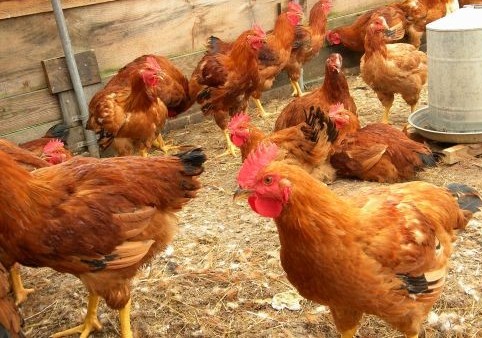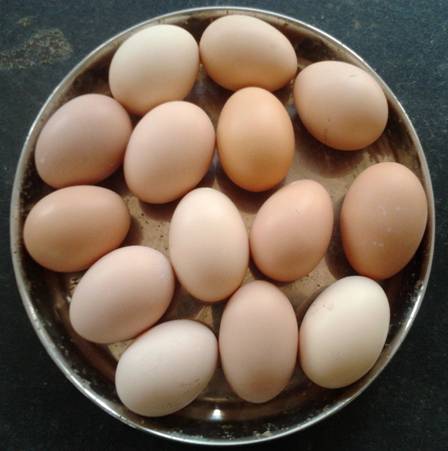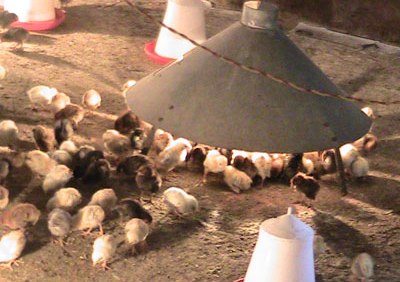Vanaraja Chicken Farming:

Introduction of Vanaraja Chicken Farming:- Vanaraja chicken is one of the coloured bird for rural poultry farming. This bird is reared for both eggs and meat. The product from native fowls is widely preferred because of their pigmentation, taste, leanness, flavour and suitability. These birds (10 to 20) can be reared under free range conditions for egg purpose where plenty of natural feed is available. In case of commercial farming, these birds can be reared under intensive/semi intensive conditions providing all necessary inputs just like commercial broilers. Backyard poultry breed with an egg production of 150 to 200 & 1.3 to 1.5 Kg body weight at 10 to 14 weeks of age is viable in rural village condition.
Advantage and benefits of Vanaraja Chicken Farming:- Following are the main advantages and benefits of Vanaraja Chicken farming.
- Vanaraja birds are attractive and multi coloured
- Vanaraja birds have high degree of immune power, hence less disease probability
- Vanaraja birds performance is quite good with low nutrition
- Vanaraja birds grow faster and produce more eggs compared to desi hen
- Vanaraja birds produce brown egg just like desi hen
- Vanaraja birds meat is lean and tasty

Vanaraja Chicken Rearing: – Typically, Vanaraja birds are reared in the nursery for about 6 weeks age and then leave them in free range conditions.
Nursery Management in Vanaraja Chicken Farming:- Brooding of Vanaraja chicks is essential immediately after hatching to provide required temperature and protection from predators. Place the 2 to 3 inches of litter (paddy) in the brooder and cover the news paper on the litter. Feeders and drinkers should be arranged for these day old chicks.
- Brooders: Wooden or metal brooders can be used along with electrical bulbs for producing required heat. Generally, the heat source of 2 watt/chick is required. To prevent the birds going near to heat source, chick gourds can be used.
-

- Feed: Growing birds under nursery management should be given with well balanced feed which contains nutrients, vitamins and minerals. It is important to make sure every bird gets the feed and clean drinking water. The diet can be formulated using locally available feeds to meet the required nutrition for the birds. Layer grower feed which is available commercially can also be used during the first 6 weeks of bird age.
- Health Care: Though Vanaraja birds have better immune system, they need to be protected from fowl pox and Newcastle diseases. The following chart shows the vaccination schedule for Vanaraja birds.
| Age of bird | Vaccine name | Strain | Dose | Route |
| In the Hatchery: | ||||
| 1 day | Marke’s Disease | HVT | 0.20 ml | SC Injection |
| In the Nursery: | ||||
| 5th day | Newcastle Disease | Lasota | 1 drop | Eye drop |
| 14th day | Infectious Bursal Disease | Georgia | 1 drop | Oral drop |
| 21st day | Pox | Fowl pox | 0.20 ml | IM/SC Injection |
| 28th day | Newcastle Disease | Lasota | 1 drop | Eye drop |
| In the Field: | ||||
| 9th week | Newcastle* Disease | R2B | 0.50 ml | SC Injection |
| 12th week | Pox* | Fowl pox | 0.20 ml | SC Injection |
Free Range Management in Vanaraja Chicken Farming:- After 6 weeks of rearing under nursery management, birds will attain about 650 to 750 grams of body weight. These birds can be let out free under backyard free range conditions @ 10 to 25 birds /house, depending on the area and natural feed available. Clean drinking water should be provided every day before the birds are let out from night shelter. Generally, male Vanaraja birds can be sold after gaining minimum body weight. Under free range conditions, a female bird lay about 100 to 110 eggs per year.
- Feed under Free Range Conditions:- Generally, these birds pick their food from scavenging under free range condition. However, bajra, ragi, jowar, korra, broken rice, rice bran feeding is beneficial for their rapid growth and egg production. Feeding of the birds under free range conditions depends on the type of rearing. If they are rearing for meat purpose, the commercial layer feed is recommended. In case of egg production, the birds depend on the natural feed available. It is very important to restrict the weight of female birds @ 2.0 to 2.5 kg @ 6 months period because the egg production capacity will go down.
- Diseases under Free Range Conditions:- The important disease that effects in the free range conditions is “Newcastle Disease”. Make sure to have night shelter with good ventilation and protection from predators and parasites.
This chart explains about performance of birds in Vanaraja Chicken Farming.
| Economic Trait | Performance |
| Body weight of the birds in grams. | |
| 6 weeks | 650 to 750 (grams) |
| @ maturity | 2 kg to 2.3 kg |
| Egg weight ( In grams) | |
| 28 weeks | 45 grams |
| 40 weeks | 55 grams |
| Age of the bird @ first egg | 175 days |
| Surviving % (up to 6 weeks) | 97% |
Note: For buying Vanaraja chicken eggs or day old chicks contact project directorate on poultry @ 040-24015651.The Vanaraja chicks of 1 day old (out of hatchery) cost 15 Rs. plus packing material. Payment can be done through cash or Demand Draft.
Bottom Line of Vanaraja Chicken Farming:- These birds are just like country chicken once they are under free range management after 6 weeks of age. Good profits are possible in short time due to their high egg production rate and fast growth.
For Sheep or Goat farming Information: Read here.
hello,
We are planning to have Desi hen farming project please guide.
You can read here about: Country Chicken Farming Project Report.
I interested this type of work. I want Vanaraja chicks. Anybody seller’s are there.
For Vanaraja chicks, you can contact any agriculture poultry department. They sell 1 day old vaccinated chicks for affordable price.
I need vanaraja chicks to srilanka. Any possibility
We don’t sell any chickens.
can banraja chicken incubation ??
I am running commercial poultry farm from last 15 years, i am interested in desi chicken vanraja farming, please guide and help me, how to grow desi chicken vanraja, how much time period it will take to grow for meat purpose, i live in Chandigarh, and i am running my farm in Rajpura area, from where i get chicks easily from surrounding area, i search in google but no positive results i got, so please guide me from where the chicks can available and at what price.
I am going to start vonraj chicken farming so plz provide me the contact details for purchase of day old chicken
I have a doubt about Vanaraja chickens. Can they reproduce on their own ? thanks in Advance
Is the meat of vanaraj chicken healthy like desi? or is it like broiler chicken? please advise.